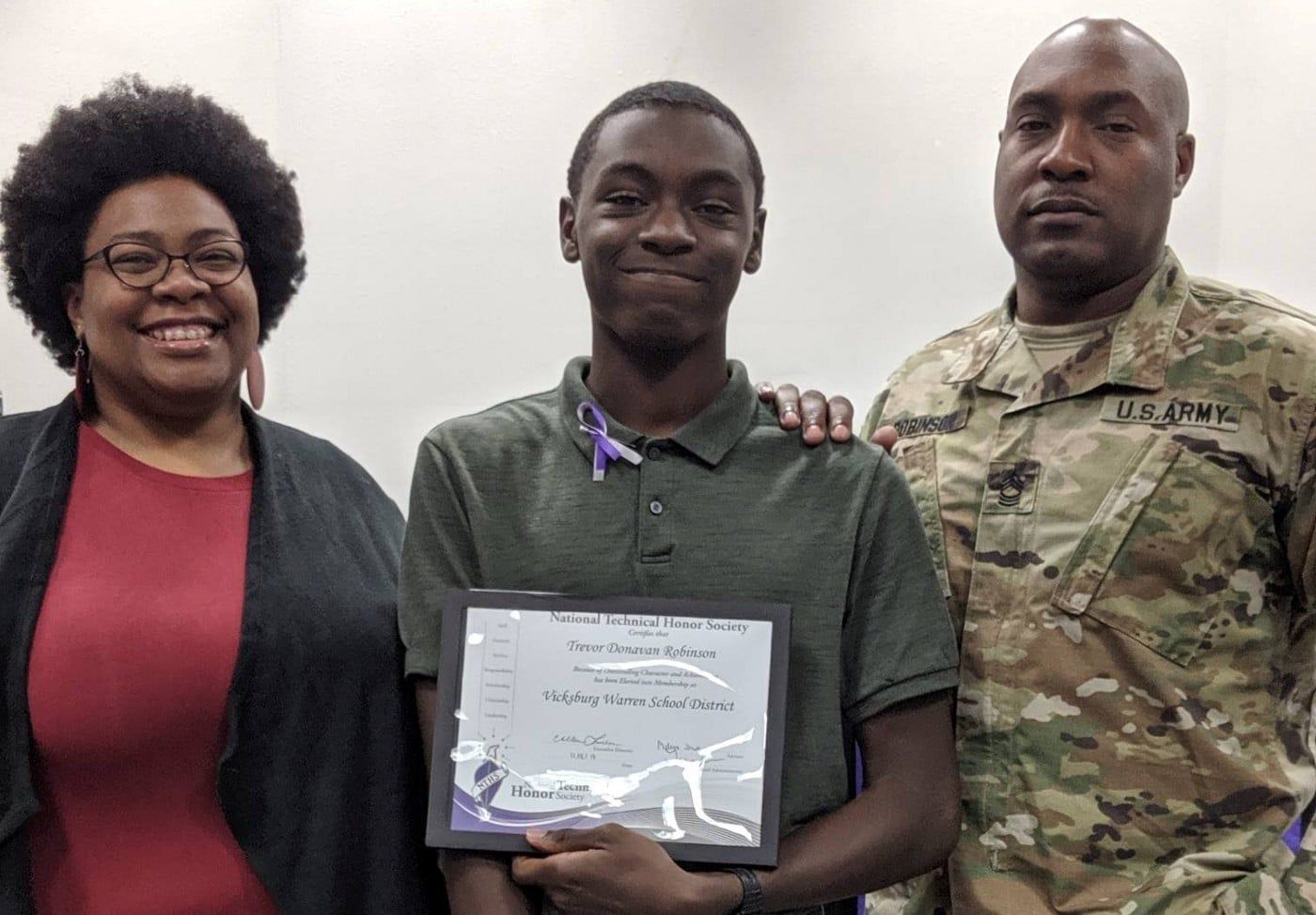How Workforce Development Became Important to Me
Graduation: 2020
In the Fall of 2019, after being shipped to the 3rd duty station in 4 years, I started back to college to get my degree. Despite being a software engineer for almost 20 years at the time with another 16 years of sales and marketing experience, I was at a point where I could finally finish my Bachelor’s degree. Still, I didn’t need to complete it for a career aspiration. I wanted to finish it for…me. So, I chose Sociology as my major and started to crank out my dozens upon dozens of papers in these classes. My Organizational Communications class sparked something that made me do a deep dive into Structuration Theory. This concept views how the people of a culture transform the aspects of that culture. I wrote a paper on how the agents of a company culture determine that culture’s structure and the changes derived from the agents. As an example in the field, if a company wants to be more diverse, equitable, and inclusive, modern organizational communication dictates that those that benefit from the culture change must also be involved in the evolution.
When I was taking this class in early 2020, we were in the middle of a pandemic, the George Floyd murder sparked rioting, and companies were scrambling to address diversity, equity, and inclusion concerns in their workplace. For us at Shamrck, we’d already been a remote organization since 2018 (pre-pivot, of course). We’d already developed a culture of respect centered on DEI and just generally having a safe environment for staff. We’d already established a mantra of work-life balance that capitalized on the premise of the gig economy and project-based interactions. My team was happy, and so was I but completing my degree in June 2020 with this notion of Organizational Communication on my mind had me truly diving into what Human Resources could look like with the proper method of communication in place.
Parent Engineering
Fast forward to about October 2020. At this point, I was deep in the trenches of SHRM materials, looking at how human resource management was changing in the world with the increase of DEI manpower and the creation of executive spots for the role. Okay. This looks great for optics, but I was concerned if it was actually working. Mind you, at this point, I’m still just the CEO of a software dev shop trying to productize our offering with this AI SEO platform we built, and all of this human resources stuff was just a hobby for me. I was insanely curious about how I had successfully maintained very long-term contractors as staff members and how my thought processes as a leader helped cultivate our culture. What would that mean when we started to grow, and how could I document that to make sure it’s sustainable?
Something I should have said at the beginning: I have ADHD. One concept leads me to research others and find patterns of influence to solve problems, so if you wonder why this story is kind of roundabout in some aspects, that’s why. I’m almost to the point, I promise.
And we’re back. At the same time, my son, Trevor, was a junior in high school preparing for his second semester. He’s a bright kid that I saw had a spark for mechanical engineering since he was 10, and I spent as much time as I could helping him cultivate that. He was on a local robotics team as a 3D modeler and spent a lot of time in his engineering academy learning how to apply engineering thought processes to solve problems. His counselor scheduled him for a Dual Credit College Algebra class for the following semester. I questioned the counselor about it and advised her that he was going to college for engineering, and this class would literally just be checking a box for high school but would not serve him in any capacity.

After conversations with her and another counselor at the community college, things were sent up to the school board for them to act. Unfortunately, the school did not have the staff to teach a Calculus class, which was needed, so they provided the next best thing. A virtual, self-paced course was created to introduce Calculus concepts to not only my son but 6 other students that were found in the district to fall into the same problem. First off, I didn’t know that I could even advocate for my child’s education in this manner, and second, I was really thinking about why districts didn’t do this more often based on the potential post-secondary journey for a student.
Sociological Theory in Mind
My wheels, which there are many in my brain, were turning. On the one hand, organizations are trying to improve culture. To improve, you need those who benefit from that culture at the table. You can’t solve problems for women in the workplace without talking to women. You can’t be inclusive of LGBTQ+ issues without talking to LGBTQ+ people. You can’t discuss microaggressions and how they affect people without the people experiencing them. Additionally, it’s not enough to just hire people from marginalized communities to seem inclusive. We have to address systemic issues that drive equity.
On the other hand, I’m seeing, as a parent, the career development path in schools is determined by macro and micro factors that can quickly and easily ignite or derail a student from a particular career path. This is why we see the push for girls in STEM, trade school training, and entrepreneurship that allow a student to evaluate their pathways. We call these pathways the 4 E’s of the post-secondary journey: Enrollment (going to college), Enlistment (joining the armed forces), Employment (trades and certifications), and Entrepreneurship (start a business).
If the end result is creating more inclusive environments with top talent that allows for economic growth in a company, we have to look back at where the disconnect widens the most: high school. If we apply the basic concept of structure and agency, the structure of secondary school provides the conduit for growth, or wane, in a student, and this trajectory determines how they start off in the workforce. Of course, businesses want to be more inclusive. Still, if the hiring pool is so small because the lack of access to resources negatively impacts marginalized communities, it is harder for businesses to accomplish sustainable change when talent pipelines are not maintained.
Therein lies one major problem. The education to industry gap isn’t just about knowledge. It’s also about quality, quantity, and diversity. Schools have certain constraints that prohibit them from being immediately flexible while businesses and industries change daily. How can education keep up in a way that helps maintain that talent pipeline? They can’t. Educators can’t know everything about where industries are traversing. And that’s okay. This is not deemed a failure, as it is an opportunity to bridge the gap.
The Pivot
Our customers didn’t really care about our fantastic SEO tool, but I had a significant problem from a systemic issue that I could solve. What were the issues and the anticipated outcomes? I’m going to do this in the most software engineering way possible:
If inclusion = corporate responsibility: print (“diversity in the talent pool must be at sustainable levels to allow for access to top talent”)
If students != empowered, trained, and hopeful: print (“the talent pool will always lack DEI and marginalized communities will continue to suffer”)
If access to resources = opportunity: print (“obtaining resources must be equitable for the desired outcomes”)
All of this is to say that for organizations to be more diverse and inclusive, we have to prepare a diverse and inclusive workforce with equitable resources for all to benefit and progress.
Shamrck was born. We compiled the AI/ML we built for SEO for business and created a workforce development platform that looks at career development in a sociological way. We introduce career development to middle school students and prepare them to gain experience. By the time they are juniors in high school, they have the interest, aptitude, and skill to go into project-based internships with real businesses to help them further become industry-capable. Additionally, by training high school students how to work in project-based environments, we prepare them for the future of work in the gig economy and help businesses see the value in leveraging the gig economy for growth.
A high school student with 2–3 years experience in an industry that then goes off to college can graduate with 6–7 years of experience in their field and a degree. Students interested in the armed forces can be better prepared for a job that interests them, be academically qualified via ASVAB testing, and will likely be retainable servicemembers because their decision to join was objectively informative. A student interested in a trade or entering the workforce after graduation can easily see what opportunities are available to them and the potential economic growth of a career path. Those students traversing wanting to be their own boss can get the support necessary to be successful as entrepreneurs.
What started as a hobby for me while finishing my Bachelors of Arts in Sociology has become my new career path as a Clinical Sociologist in Workforce Development. I am constantly accessing the situation of culture in an organization and seeking to reduce problems through analysis and intervention by creating a platform that, at its core, inspires hope in our future workforce. Shamrck is a critical assessment of beliefs, policies, and/or practices that allow us to improve the situation, not only for Career, Technical, and Agriculture Education but also for Human Resources Management in organizations of all sizes.
I believe in this path as we try to solve a substantial systemic issue in a socially responsible way. Thank you for your patience as you walked through the journey of my brain.







